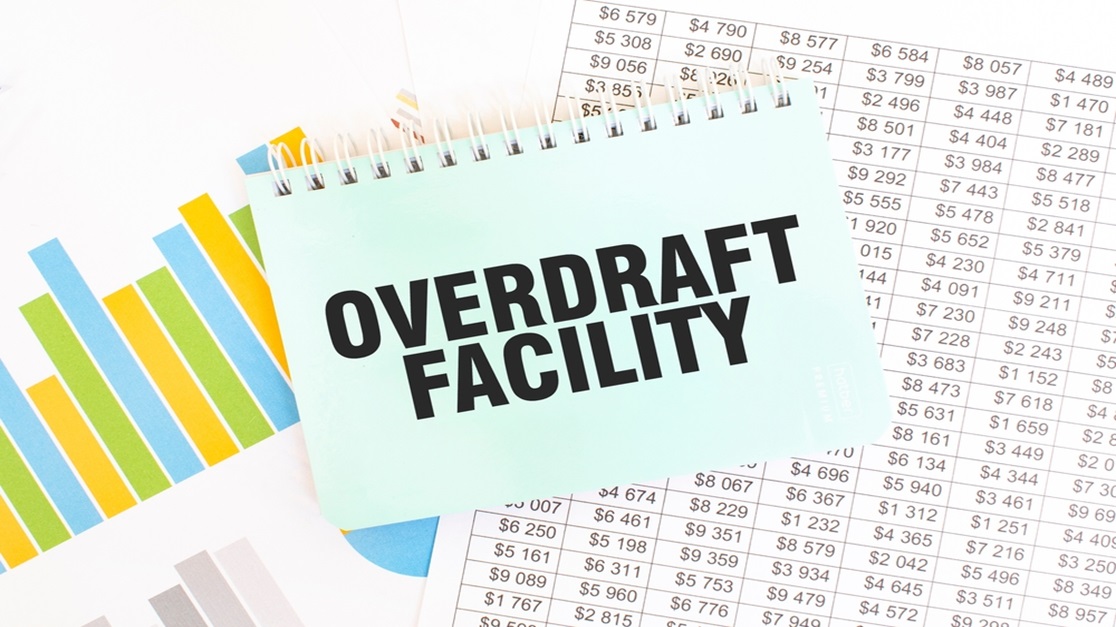Understanding Overdraft Facility in Current Account
July 01, 2025

Cash crunch is not uncommon in businesses. Thanks to overdraft facility in current accounts, you can tackle such emergencies without getting into high-interest debt. An overdraft facility in a current account is one of the most convenient financial tools that provides short-term liquidity without the hassle of applying for a loan. In this comprehensive guide, we will explore what an overdraft facility is, its features, benefits, eligibility, charges, and best practices for using it.
What is an Overdraft Facility in a Current Account?
An overdraft facility is a credit arrangement that allows account holders to withdraw more money than they have in their current account, up to a pre-approved limit. It acts as a financial safety net to cover short-term cash flow gaps or unexpected expenses.
The overdraft limit is determined by the bank, based on factors such as the account holder’s creditworthiness, account history, and income.
Features of Overdraft Facility
Flexibility
You can withdraw funds as needed, up to the limit, and repay at your convenience.
Interest on Used Amount
Interest is charged only on the amount used, not the entire overdraft limit.
Short-Term Solution
Ideal for bridging temporary cash flow gaps.
Customisable Limits
Banks set the overdraft limit based on your financial profile and account activity.
No Collateral (For Some Accounts)
Many banks offer unsecured overdraft facilities, especially for salary accounts or accounts with steady income inflows.
Benefits of Overdraft Facility
Quick Access to Funds
No need to wait for loan approvals during financial emergencies.
Cost-Effective
Interest is levied only on the withdrawn amount, making it cheaper than traditional loans.
Convenient Repayment
Repay when funds are available without strict EMIs.
Improves Liquidity
Helps businesses maintain operations during revenue fluctuations.
Better Financial Planning
Supports timely payments, avoiding penalties or missed opportunities.
Types of Overdraft Facilities
Secured Overdraft
Backed by collateral such as fixed deposits (FDs), property, or other financial assets.
Unsecured Overdraft
Does not require collateral but depends on the borrower’s credit score and account history.
Overdraft Against Salary
Offered to salaried individuals with a steady income.
Business Overdraft
Tailored for businesses to manage working capital and operational expenses.
Interest Rates and Charges
Interest rates for overdraft facilities typically range between 10% to 20% p.a. but vary depending on the bank and whether the overdraft is secured or unsecured. Other charges may include:
- Processing Fees
- Renewal Fees
- Late Payment Penalties
Final Thoughts
An overdraft facility in a current account is a versatile financial tool that provides liquidity during emergencies or cash flow shortages. Whether you are an individual or a business, understanding the terms, charges, and responsible usage can help you make the most of this facility.
Consider discussing your needs with your bank to find the most suitable overdraft plan for you. Always remember, while overdrafts offer flexibility, responsible borrowing is key to maintaining financial health.
Simplify your business transactions with Current Account. Open a Current Account with Ujjivan Small Finance Bank and enjoy multiple benefits.
FAQs
1. What is the difference between an overdraft and a loan?
A loan is a lump sum borrowed for a specific purpose with fixed EMIs, whereas an overdraft allows flexible borrowing up to a limit with interest charged only on the used amount.
2. Can individuals avail of an overdraft facility?
Yes, individuals with a current or salary account are eligible for overdraft facilities.
3. Is a credit score required for an overdraft facility?
Yes, a good credit score is crucial, especially for unsecured overdrafts.
4. How is the overdraft limit decided?
Banks determine the limit based on your financial profile, account history, and creditworthiness.
5. What happens if I don’t repay the overdraft?
Non-repayment can lead to penalties, higher interest charges, and negative impacts on your credit score.
6. Can I use an overdraft facility multiple times?
Yes, as long as you stay within the approved limit, you can use and repay repeatedly.
7. How is interest calculated on an overdraft?
Interest is calculated daily on the outstanding amount and charged monthly.
8. Can businesses avail of overdrafts for working capital?
Yes, overdrafts are an excellent tool for businesses to manage working capital and operational costs.
Latest Blogs

How Jewellers in India Calculate Gold Price
June 26, 2025
Gold jewellery holds a special place in Indian culture, often bought during festivals and family celebrations.

How to Link Your Mobile Number with Aadhaar Online & Offline Methods)
June 25, 2025
Linking your mobile number with Aadhaar is essential if you want to access Aadhaar-based services like e-KYC and Video KYC for bank accounts, OTP verification, filing taxes, e-Aadhaar downloads, and biometric authentication. Without a registered mobile number, you can't use any online Aadhaar services.

The Importance of Property Insurance When Taking a Home Loan
June 25, 2025
A home loan is a long-term financial commitment often spanning between 10 to 20 years, or even more.

Fixed Deposits vs Sovereign Gold Bonds (SGB): Which Is the Better Investment?
June 24, 2025
In today’s uncertain economic climate, conservative and low-risk investment options continue to dominate the choices of Indian savers.

FD vs SIP: Not a Race, But a Financial Match
June 24, 2025
We often treat money like a race — chasing returns, tracking trends, comparing who’s earning more from what.





